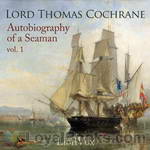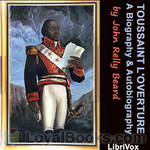|
Books Should Be Free Loyal Books Free Public Domain Audiobooks & eBook Downloads |
|
|
Books Should Be Free Loyal Books Free Public Domain Audiobooks & eBook Downloads |
|
War Stories |
|---|
|
Book type:
Sort by:
View by:
|
By: Pierre Loti (1850-1923) | |
|---|---|
 War
War
Pierre Loti [Julien Viaud] (1850-1923) was a French naval officer and novelist. The present book is one of his few works of non-fiction, a small collection of letters and diary entries that describe his views and experiences in the wars and military operations in which he participated. Besides World War I, he also sheds light upon his views and involvement in the preparations for the Turkish Revolution of 1923, for which until today a famous hill and popular café in Istanbul are named after him. | |
By: Benjamin Harris (1781-1858) | |
|---|---|
 The Recollections of Rifleman Harris
The Recollections of Rifleman Harris
The recollections of a British infantryman who served in the British army during the Napoleonic Wars. | |
By: Geoffrey H. Malins (1887-1943) | |
|---|---|
 How I Filmed the War
How I Filmed the War
An account of World War I and the experience of filming it by an early cinematographer (and, after the war, successful director) who was there. | |
By: Lord Thomas Cochrane (1775-1860) | |
|---|---|
 Autobiography of a Seaman, Vol. 1
Autobiography of a Seaman, Vol. 1
This two volume work is the autobiography of Lord Cochrane, a naval captain of the Napoleonic period. His adventures are seminal to the development of naval fiction as a genre. Marryat sailed with Cochrane, while later writers borrowed incidents from this biography for their fictions. Most notable among these is Patrick O'Brian, three of whose novels have clear parallels to incidents in the life of Cochrane. This first volume covers Cochrane's earlier life, during which he is most active militarily. (Introduction by Timothy Ferguson) | |
By: Mark Twain | |
|---|---|
 Anti-imperialist writings
Anti-imperialist writings
This audiobook is a collection of Mark Twain's anti-imperialist writings (newspaper articles, interviews, speeches, letters, essays and pamphlets). | |
By: Daniel A. Lord (1888-1955) | |
|---|---|
 Clouds Cover the Campus
Clouds Cover the Campus
On an American college campus, in the early years of World War II, a professor from Germany is murdered and the plans for a new bomb sight he had invented are missing. Who murdered the professor and stole the plans? And are the accidents, happening with alarming frequency to young student aviators from the campus, really accidents -- or is some unknown conspiracy afoot?This mystery novel was written by Daniel A Lord, S.J., a priest and popular American Catholic writer. The subjects of the works in his bibliography range from religion, humor, plays, songs, mysteries and even politics. His most influential work was possibly in drafting the 1930 Production Code for motion pictures. ( | |
By: John Relly Beard (1800-1876) | |
|---|---|
 Toussaint L’Ouverture: A Biography and Autobiography
Toussaint L’Ouverture: A Biography and Autobiography
François-Dominique Toussaint L’Ouverture (1743-1803) rose to fame in 1791 during the Haitian struggle for independence. In this revolt, he led thousands of slaves on the island of Hispañola to fight against the colonial European powers of France, Spain and England. The former slaves ultimately established the independent state of Haiti and expelled the Europeans. L’Ouverture eventually became the governor and Commander-In-Chief of Haiti before recognizing and submitting to French rule in 1801... | |
By: Arthur Machen (1863-1947) | |
|---|---|
 The Angels of Mons
The Angels of Mons
The Angels of Mons is a popular legend about a group of angels who supposedly protected members of the British army in the Battle of Mons at the outset of World War I. The story is fictitious, developed through a combination of a patriotic short story by Arthur Machen, rumours, mass hysteria and urban legend, claimed visions after the battle and also possibly deliberately seeded propaganda. | |
By: John Reed (1887-1920) | |
|---|---|
 Insurgent Mexico
Insurgent Mexico
In the autumn of 1913 John Reed was sent to Mexico by the Metropolitan Magazine to report the Mexican Revolution. He shared the perils of Pancho Villa's army for four months, present with Villa's Constitutional Army when it defeated Federal forces at Torreón, opening the way for its advance on Mexico City. Reed's time with the Villistas resulted in a series of outstanding magazine articles that brought Jack a national reputation as a war correspondent. Reed deeply sympathized with the plight of the peons and vehemently opposed American intervention, which came shortly after he left... | |
By: Anonymous | |
|---|---|
 The Broken Vase and Other Stories
The Broken Vase and Other Stories
The Broken Vase and Other Stories;for Children and Youth,Compiled by a Teacher | |
By: Edith Wharton (1862-1937) | |
|---|---|
 The Marne: a tale of the war
The Marne: a tale of the war
American writer Edith Wharton is known for her novels of manners set in old New York; yet much of her adult life was spent in France. She lived in Paris throughout World War I and was heavily involved in refugee work. Her 1918 novella The Marne dramatizes the events of the war as seen through the eyes of 15-year-old Troy Belknap, an American boy who longs to join up and save his beloved France. | |
By: יוסף חיים ברנר Yosef Haim Brenner (1881-1921) | |
|---|---|
 עולה (Injustice), with excerpt from The Escaping Club
עולה (Injustice), with excerpt from The Escaping Club
This is a bilingual project. The first part, in Hebrew, is the story "Injustice" by Yosef Haim Brenner, written following the conquest of Palestine by the British troops during WWI. The story takes place on the Turkish side of the dividing line between the combating forces. An escaped British prisoner of war had taken shelter among a group of Jewish workers, who, following a heated discussion, turned him over to the Turkish army. The second part of this project, in English, is a chapter in the book "The Escaping Club," written in 1922 by the same British prisoner of war, the aviator A. J. Evans, who gave his account of the same event. | |
By: Phoebe Yates Pember (1823-1913) | |
|---|---|
 Reminiscences of a Southern Hospital, by Its Matron
Reminiscences of a Southern Hospital, by Its Matron
Phoebe Yates Pember served as a matron in the Confederate Chimborazo military hospital in Richmond, Virginia, during the Civil War, overseeing a dietary kitchen serving meals to 300 or more wounded soldiers daily. Reminiscences of a Southern Hospital is her vivid recounting of hospital life and of her tribulations (and personal growth) as a female administrator. To follow her from day one, when she is greeted with “ill-repressed disgust” that “one of them had come,” and she, herself, “could... | |
By: Various | |
|---|---|
 New York Times Current History
New York Times Current History
The New York Times, CURRENT HISTORY, A Monthly Magazine, THE EUROPEAN WAR, VOLUME IIAPRIL, 1915 Germany's War Zone and Neutral Flags The German Decree and Interchange of Notes Answering American Protests to Germany and Britain BERLIN, Feb. 4, (by wireless to Sayville, L.I.)--The German Admiralty today issued the following communication: The waters around Great Britain and Ireland, including the whole English Channel, are declared a war zone on and after Feb. 18, 1915. Every enemy merchant ship found in this war zone will be destroyed, even if it is impossible to avert dangers which threaten the crew and passengers... | |
By: Alexander Hunter (1843-1914) | |
|---|---|
 Johnny Reb and Billy Yank
Johnny Reb and Billy Yank
Johnny Reb & Billy Yank is an epic novel first published in 1905 by Alexander Hunter, a soldier who served in Confederate General Robert E. Lee's Army from 1861 to 1865. The novel is noted for encapsulating most of the major events of the American Civil War, due to Hunter's obvious involvement in them. The "novel" is actually pulled from Hunter's own diaries during the war. He explains his reasons for publishing his accounts in the preface to the novel- "There were thousands of soldiers on both sides during the Civil War, who, at the beginning, started to keep a diary of daily events, but those who kept a record from start to finish can be counted on the fingers of one hand... | |
By: Hiram Bingham (1875-1956) | |
|---|---|
 Explorer in the Air Service
Explorer in the Air Service
Explorer Hiram Bingham discovered Machu Picchu in 1911, as recounted in his book Inca Lands, now released on Librivox at http://librivox.org/inca-lands-by-hiram-bingham/. In 1917, he became an aviator and organized the United States Schools of Military Aeronautics at eight universities to provide ground school training for aviation cadets, and then in Issoudun, France, Bingham commanded the primary Air Service flying school. He became a supporter of the Air Service in their post-war quest for independence from the Army and supported that effort, in part, with the publication of this book of his wartime experiences published in 1920 by Yale University Press. | |
By: Leo Tolstoy (1828-1910) | |
|---|---|
 War and Peace Vol. 1 (Dole Translation)
War and Peace Vol. 1 (Dole Translation)
”War and Peace” is a panoramic novel: It is its own justification, and perhaps needs no introduction. It always reminds the translator of a broad and mighty river flowing onward with all the majesty of Fate. On its surface, float swiftly by logs and stumps, cakes of ice, perhaps drowned cattle or men from regions far above. These floating straws, insignificant in themselves, tell the current. Once embark upon it, and it is impossible to escape the onward force that moves you so relentlessly. What landscapes you pass through, what populous towns, what gruesome defiles, what rapids, what cataracts! The water may be turbid, or it may flow translucent and pure, – but still it rushes on... | |
By: Herman Melville (1819-1891) | |
|---|---|
 Selections from Battle-Pieces and Aspects of the War
Selections from Battle-Pieces and Aspects of the War
Published in 1866, Battle-Pieces and Aspects of the War is a collection of poems about the Civil War by Herman Melville. Many of the poems are inspired by second- and third-hand accounts from print news sources (especially the Rebellion Record) and from family and friends. A handful of trips Melville took before, during, and after the war provide additional angles of vision into the battles, the personalities, and the moods of war. In an opening note, Melville describes his project not so much as a systematic chronicle (though many of the individual poems refer to specific events) but as a kind of memory piece of national experience... | |
By: Edwin F. Benson (1867-1940) | |
|---|---|
 Dodo Wonders
Dodo Wonders
"Dodo Wonders" is the third and last of the "Dodo" novels by E.F. Benson, author of the "Mapp and Lucia" series as well as numerous stand-alone novels and short stories. Dodo was rumored to be based on Lady Margot Asquith; when questioned about it, Lady Asquith reportedly replied that Benson had taken nothing from her for the character of Dodo "except her drawing-room." "Dodo Wonders" takes Benson's characters, the glittering socialite Lady Dodo Chesterford, her husband, and friends into World War I-era England... | |
By: Andrew Lang (1844-1912) | |
|---|---|
 Story of Joan of Arc
Story of Joan of Arc
Joan of Arc is a folk heroine of France and a Roman Catholic saint. Claiming divine guidance, she led the French army to several important victories during the Hundred Years' War, which paved the way for the coronation of Charles VII of France. Captured by her enemies, she was sold to the English and put on trial for charges of "insubordination and heterodoxy". She was burned at the stake for heresy when she was 19 years old. Twenty-five years after her execution, an inquisitorial court examined the trial, pronounced her innocent, and declared her a martyr... | |
By: Everett T. Tomlinson (1859-1931) | |
|---|---|
 Young Folks' History of the American Revolution
Young Folks' History of the American Revolution
This work has grown out of the desire frequently expressed to the writer when he has been lecturing on the American Revolution, that in some way the experiences of the people as well as the deeds of the armies in that trying period might be presented to the present generation. The author has given to the public this narrative, in which the course of the armies in the various campaigns is followed and, at the same time, many of the forgotten or ignored experiences and deeds of the common people are also incorporated. | |
By: Pat O'Brien (1890-1920) | |
|---|---|
 Outwitting The Hun; My Escape From A German Prison Camp
Outwitting The Hun; My Escape From A German Prison Camp
A true war narrative, published in 1918 while WWI was still going on. | |
By: Elizabeth Bacon Custer (1842-1933) | |
|---|---|
 Boots and Saddles
Boots and Saddles
Elizabeth Custer has penned an engaging portrait of 1870’s life on a U.S. cavalry post in the Dakotas, just before her husband and his troops met their tragic deaths in the Battle of the Little Big Horn. “Our life,” she writes, “was often as separate from the rest of the world as if we had been living on an island in the ocean.” Her portrait of her husband, General George Armstrong Custer is laudatory—his intellect, his love of dogs (he kept a hunting pack of 40 at the post); but, Boots and Saddles is more than just a memorial... | |
By: (William) Winwood Reade (1838-1875) | |
|---|---|
 Martyrdom of Man
Martyrdom of Man
William Winwood Reade (1838 - 1875) was a British historian, explorer, and philosopher. His most famous work, the Martyrdom of Man (1872)—whose summary running head reads "From Nebula to Nation"—is a secular, "universal" history of the Western world. Structurally, it is divided into four "chapters" of approximately 150 pages each: the first chapter, "War", discusses the imprisonment of men's bodies, the second, "Religion", that of their minds, the third, "Liberty", is the closest thing to a... | |
By: Jefferson Davis (1808-1889) | |
|---|---|
 Rise and Fall of the Confederate Government, Volume 2
Rise and Fall of the Confederate Government, Volume 2
The Rise and Fall of the Confederate Government (1881) is written by Jefferson Davis, former President of the Confederate States of America during the American Civil War. Davis wrote the book as a straightforward history of the Confederate States of America and as an apologia for the causes that he believed led to and justified the American Civil War. (Intro modified from Wikipedia) "The most painful pages of this work are those which . . . present the subjugation of the State governments by the Government of the United States... | |
By: F. Tennyson Jesse (1888-1958) | |
|---|---|
 Sword of Deborah
Sword of Deborah
"The Sword of Deborah" contains the reflections of a woman journalist visiting women working behind the lines in France during World War I. She writes: "I was glad to have seen all the different convoys I had, because no two had been to me alike, and to each I am indebted for a differing expression of the same vision, which is the vision splendid of a duty undertaken gladly and sustained with courage. From my first convoys -- the Fannies and the G.S.V.A.D.'s -- I got the wonderful facts of it, at the V... | |
By: Alec John Dawson (1872-1951) | |
|---|---|
 Somme Battle Stories
Somme Battle Stories
Stories of World War I warfare, published in 1916 in the midst of the war. (That's why names of persons and units are literally "blanked" out.) Alec John Dawson (1872 - 1951), generally known as A. J. Dawson (pseudonyms Major Dawson, Howard Kerr, Nicholas Freydon) was an English author, traveller and novelist. During World War I he attained the rank of Major, and was awarded the MBE and Croix de Guerre in recognition of his work as a military propagandist, a work the listener may want to keep in mind... | |
By: United States Army Staff Judge Advocate (1775-) | |
|---|---|
 Henry Wirz, Commander of Andersonville Confederate Prison: Trial and Execution
Henry Wirz, Commander of Andersonville Confederate Prison: Trial and Execution
Henry Wirz (November 25, 1823 – November 10, 1865) was the only Confederate soldier tried after the end of the American Civi War. He was tried, convicted, and executed, not for being a Confederate soldier, but for conspiracy and murder relating to his command of Camp Sumter, the infamous Confederate prisoner-of-war prison at Andersonville, Georgia. Wirz encouraged and commanded barbaric and murderous policies and actions in the prison. This Librivox recording is excerpts from the 850 page summary of the trial written by the Army Judge Advocate (prosecutor) for, and at the command of, The Congressional House Of Representatives, 40th Congress, Second Session, Ex, Doc... | |
By: Leo Tolstoy (1828-1910) | |
|---|---|
 Sevastopol
Sevastopol
Sevastopol Sketches (Russian: Севастопольские рассказы, Sevastopolskiye rasskazy) are three short stories written by Leo Tolstoy and published in 1855 to record his experiences during the Siege of Sevastopol (1854–1855) in the Crimean War (1853-1856). The name originates from Sevastopol, a city in Crimea. The book has also been released under the anglicized title The Sebastopol Sketches and is sometimes titled Sevastopol Stories. These brief "sketches" formed the basis of many of the episodes in Tolstoy's magnum opus, War and Peace... | |
By: Alexander Russell Bond (1876-1937) | |
|---|---|
 Inventions Of The Great War
Inventions Of The Great War
“… this war was not one of mere destruction. It set men to thinking as they had never thought before. It intensified their inventive faculties, and as a result, the world is richer in many ways. Lessons of thrift and economy have been taught us. Manufacturers have learned the value of standardization. The business man has gained an appreciation of scientific research. The whole story is too big to be contained within the covers of a single book, but I have selected the more important and interesting inventions and have endeavored to describe them in simple language for the benefit of the reader who is not technically trained... | |
By: Florence Roma Muir Wilson (1891-1930) | |
|---|---|
 If All These Young Men
If All These Young Men
Another remarkable World War I novel by Romer Wilson, "If All These Young Men" is a character study of a group of young 20-something friends in England dealing with the looming, grey presence of the War in their lives. The story begins on Good Friday 1918, and centers on Josephine Miller, a restless, strong-minded young woman who cannot tolerate trivialities or frivolities so long as the War goes on, and who agonizes over how to go on living in its shadow. The characters of Josephine and her friends... | |
By: Sarah Emma Edmonds (1841-1898) | |
|---|---|
 Nurse and Spy in the Union Army
Nurse and Spy in the Union Army
The “Nurse and Spy” is simply a record of events which have transpired in the experience and under the observation of one who has been on the field and participated in numerous battles—among which are the first and second Bull Run, Williamsburg, Fair Oaks, the Seven days in front of Richmond, Antietam, and Fredericksburg—serving in the capacity of “Spy” and as “Field Nurse” for over two years.While in the “Secret Service” as a “Spy,” which is one of the most hazardous positions in the army—she penetrated the enemy’s lines, in various disguises, no less than eleven times; always with complete success and without detection... | |